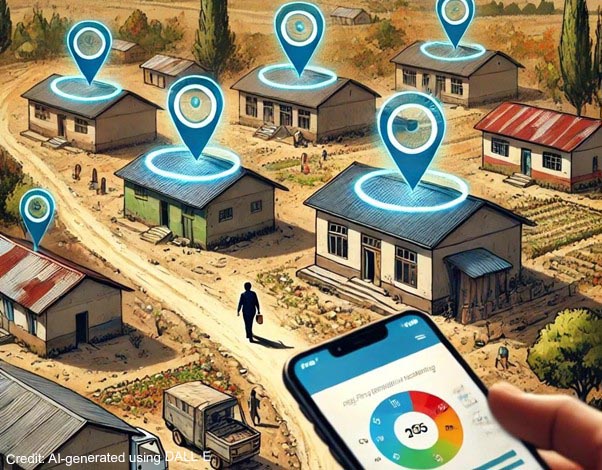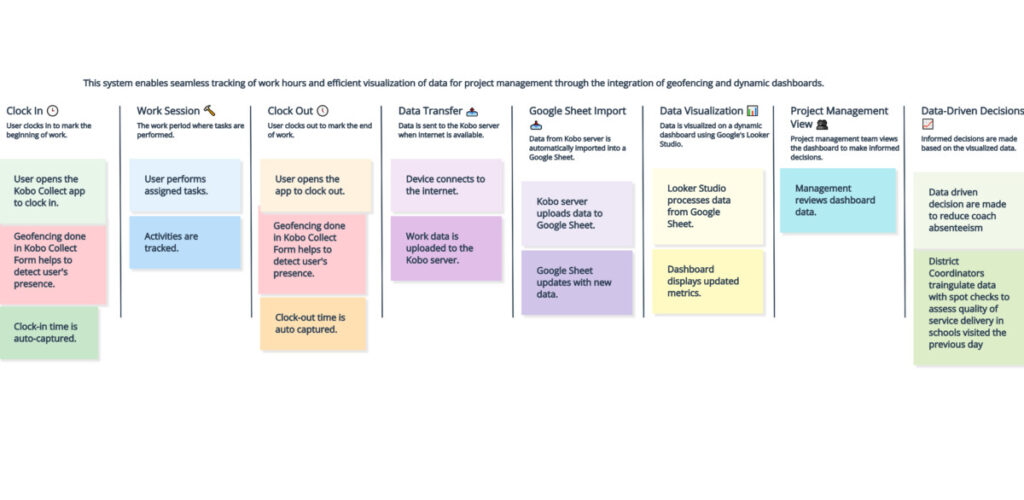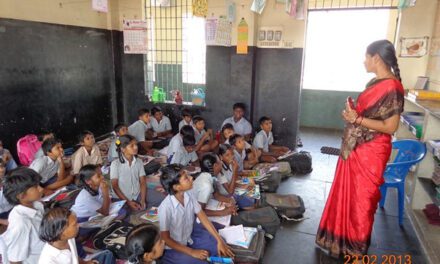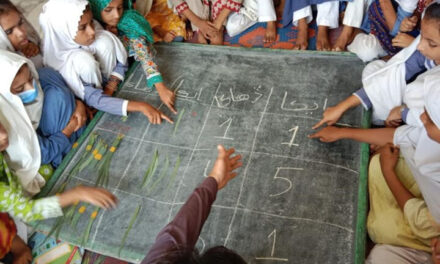This blog was written by Siddharth Pillai , Education Programme Advisor for Street Child.
In its report from 2023, the Global Education Evidence Advisory Panel (GEEAP) has classified structured pedagogy interventions as a “Smart Buy”. Under the structured pedagogy approach, teachers are trained to implement scripted/structured lesson plans and teacher coaches provide ongoing classroom support to teachers to monitor the implementation of the lesson plan. Maximum learning gains are achieved when all the three components [i.e. in-service teacher training, teacher guides and teacher coaching] exist as part of the integrated strategy. Ongoing teacher coaching, is often the most expensive element in any structured pedagogy programme. Thus, efficient and effective teacher coaching could not only maximise learning gains but also help in optimising cost effectiveness while scaling structured pedagogy interventions.
Implementing structured pedagogy interventions at scale in hard-to-reach, crisis-affected regions presents significant hurdles. One major challenge is ensuring the consistent engagement of coaches with teachers and headteachers to reinforce structured pedagogy principles. Coach absenteeism affects dosage and adherence, diminishing the potential impact on learning outcomes. The author has witnessed high inefficiencies, measured by coach[i] absenteeism, in fragile and remote regions such as Gezab in Afghanistan and Yiffin in Sierra Leone, indicating weak governance in structured pedagogy programmes. Coaches are also found to be functionally absent when they visit the school for a few minutes rather than ensuring extended presence in the school to provide support to all teachers from Grade 1 to Grade 6, as well as the headteacher. While NGOs collect GPS coordinates of the user/coach as part of data collection, they are often neither able to track, at scale, whether the coach is at school premises nor do they have data on the time spent in those locations. Coaches are also inclined to repeatedly visit those schools closer to their homes, ignoring the hard-to-reach schools assigned to them.
Another pattern that has been observed is that coaches, to compensate for their absence and to meet the teacher observation and learning assessment targets for the month, visit multiple schools on a particular day leaving less time for coaching in each of the schools. The middle and senior project management team who supervise and support coaches, comprising of provincial/project coordinators and project managers, also often restrict their spot checks and joint visits to schools in more accessible regions than hard-to-reach, remote clusters. Studies on teacher absenteeism show that improvements in the frequency of top-down administrative monitoring reduced teacher absence and, when coupled with financial incentives, also improved student learning with no loss of intrinsic motivation among teachers. Drawing parallels from these studies, it is argued here that interventions that aid in high-frequency monitoring of coach absenteeism may lead to daily and extended presence of coaches in the school, creating enabling conditions for improvement in teaching practices.
To address the above-mentioned inefficiencies, a Geofencing Time Clock Tool using the Kobo Collect Android Application was developed. A geofencing time clock is a time-tracking system that uses GPS technology to create a virtual boundary (geofence) around a specific physical location, like a school. It is typically used to monitor and track the attendance and time spent by employees at specific locations. The organisation sets up a virtual boundary (geofence) around work sites using GPS coordinates. This boundary acts as the work zone. Employees use a mobile app on their smartphone to clock in and out of the geofenced site.
Some paid and free applications such as HubStaff and Jiggle provide geofencing time clock services. These applications could provide valid and reliable data only when the user’s device has internet access. However, a similar tool on Kobo Collect can be developed by NGOs that allows users to clock in or clock out of their selected school only when they were within a particular radius of the school site even if they were offline. The app also can be set to automatically send clock-in and clock-out data when the device has internet access . The Kobo Collect tool can be linked to a dynamic dashboard on Google’s Looker Studio via a Google Sheet that imports data from the Kobo server. The free versions of Kobo Collect and Looker Studio would meet the needs of most NGOs.
The project manager, district coordinators, and programme leads have access to dynamic dashboards as shown in Figure 2, that allow them to monitor coach absenteeism and duration of visits on a daily and weekly basis. Rather than waiting for monthly updates from a monitoring, evaluation, accountability and learning (MEAL) team, the district coordinators and project managers, using the daily updates from the dashboard, can also triangulate the data by planning their daily spot checks and joint visits to assess the quality of service provided by a particular coach to multiple teachers at a school on the previous day.
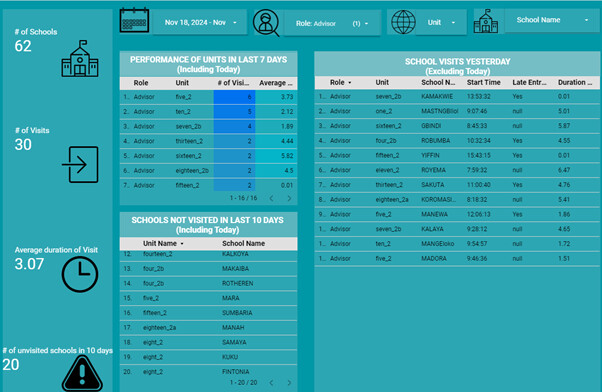
Figure 2: District Coordinator Facing page of the Dashboard on Looker Studio displaying number and duration of visits of coaches on the previous day, last 7 days, and details of schools not visited in the last 10 days.
In fragile and remote regions, where governance challenges undermine the potential of a structured pedagogy intervention or similar interventions, innovative approaches like the Geofencing Time Clock Tool can bridge critical gaps. By leveraging cost-effective and offline-compatible technology, such inefficiencies can be sustainably tackled by smaller NGOs at no additional cost, accelerating local-level action . This tool can enable teams to address some of the above-mentioned inefficiencies only when it is embedded within a broader system of accountability and support systems. The change in teaching practices at school is influenced by the quality of coaching, even though the consistent presence of a coach is a necessary condition. However, for lasting impact, tools like these are not a silver bullet but part of a larger ecosystem of solutions aimed at enhancing value rather than routine compliance.
[i] Coach, in the context of this article, are project/NGO personnel who are to commute to schools assigned to them, observe and coach the government school teachers. The teachers are not officially reporting to the coaches in such projects as coaches are NGO personnel while teachers are part of the government workforce.

